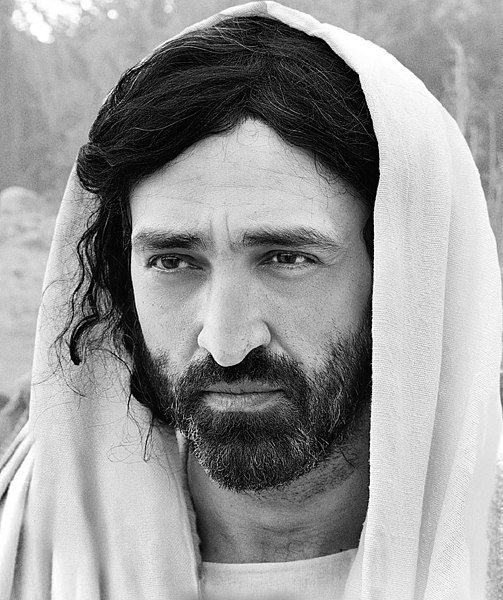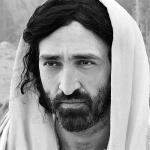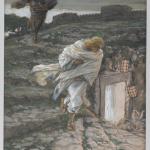
Michael J. Alter is the author of the copiously researched, 913-page volume, The Resurrection: a Critical Inquiry (2015). I initially offered 59 “brief” replies to as many alleged New Testament contradictions (March 2021). We later engaged in amiable correspondence and decided to enter into a major ongoing dialogue about his book. He graciously sent me a PDF file of it, free of charge, for my review, and has committed himself to counter-response as well: a very rare trait these days. All of this is, I think, mightily impressive.
Mike describes himself as “of the Jewish faith” but is quick to point out that labels are often “misleading” and “divisive” (I agree to a large extent). He continues to be influenced by, for example, “Reformed, Conservative, Orthodox, and Chabad” variants of Judaism and learns “from those of other faiths, the secular, the non-theists, etc.” Fair enough. I have a great many influences, too, am very ecumenical, and am a great admirer of Judaism, as I told Michael in a combox comment on my blog.
He says his book “can be described as Jewish apologetics” and one that provides reasons for “why members of the Jewish community should not convert to Christianity.” I will be writing many critiques of the book and we’ll be engaging in ongoing discussion for likely a long time. I’m quite excited about it and eagerly enjoy the dialogue and debate. This is a rare opportunity these days and I am most grateful for Mike’s willingness to interact, minus any personal hostility.
I use RSV for all Bible verses that I cite. His words will be in blue.
*****
Alter wrote:
CONTRADICTION #70 Luke 24:49 Contradicts Matthew 28:10
Luke 24:49 unequivocally declares that Jesus saw his disciples in Jerusalem and orders them to stay there: “And behold, I send the promise of my Father upon you: but tarry ye in the city of Jerusalem, until ye be endued with power from on high.” In contradiction, Matthew 28:10 reports that Jesus commanded the women to inform his disciples that he would meet them in Galilee: “Be not afraid: go tell my brethren that they go into Galilee, and there shall they see me.” In addition, Jesus had previously instructed his disciples that they were to meet him in Galilee. This message to go to Galilee was also stated earlier in Mark and Matthew during the Last Supper.
Mk 14:28 But after that I am risen, I will go before you into Galilee.
Mt 26:32 But after I am risen again, I will go before you into Galilee.
One point should be very clear: Jesus’s order to go into Galilee and the statement that at that locale he would first appear to the disciples is unmistakable, repeated, and peremptory. In conclusion, Luke contradicts Matthew. (p. 388)
Luke 24:49 And behold, I send the promise of my Father upon you; but stay in the city, until you are clothed with power from on high.
Matthew 28:10 Then Jesus said to them, “Do not be afraid; go and tell my brethren to go to Galilee, and there they will see me.”
This is apples and oranges. The disciples did see Jesus after He was risen, in Galilee (Mt 28:16-17; Jn 21:1). So Matthew is talking about post-Resurrection appearances.
Luke’s passage, on the other hand, has to do with the Day of Pentecost, when the disciples received the Holy Spirit, which happened right in Jerusalem. Pentecost occurred after all of Jesus’ post-Resurrection appearances and His Ascension. It’s described by the same writer, Luke, in Acts 2:1-4 (cf. language of Lk 1:35; 9:1). The following passage also ties in:
Acts 1:8 “But you shall receive power when the Holy Spirit has come upon you; and you shall be my witnesses in Jerusalem and in all Judea and Sama’ria and to the end of the earth.”
In Luke 24:51, Jesus ascends to heaven. Likewise, in Acts 1:9, He ascends to heaven. Both passages are written by the same author. It’s no contradiction whatsoever. Matthew and Luke + Acts are talking about completely different things. But it’s fascinating that this couplet is somehow thought to be a contradiction, isn’t it?
But there is, prima facie, two further possible difficulties in Luke: 1) his not mentioning the Galilee appearances and 2) his chronology of events. As for the first thing: he is under no obligation (literary or logical) to do so. He simply doesn’t include that aspect of the appearances, and concentrates on events in Jerusalem and its vicinity. There is no rule (not even in Alter’s book) that says, “one evangelist has to mention what other evangelists mention: even if the other three all mention it.” And to not mention something is not a “contradiction” with regard to the other texts that mention the thing: no matter how hard Alter wishes it to be so or how much he rubs the bottle with the genie in a tremendous effort to make his wish come true. It just isn’t. That’s not how logic works.
The second thing is more difficult to explain. Luke 24 seems to make everything happen on one day:
24:1 . . . on the first day of the week . . .
24:13 That very day two of them were going to a village named Emma’us . . .
24:33 And they rose that same hour and returned to Jerusalem; and they found the eleven gathered together . . .
The text continues, ostensibly one continuous narrative, until Jesus ascends to heaven (24:51). Thus, it would leave no time for the appearances in Galilee. But verse 50 refers to His Ascension some forty days later (Acts 1:3). Why does it do this without having a “break” in the text? Even Alter wouldn’t (I don’t think) claim that the same author claimed that Jesus ascended on Easter Sunday (Luke) and 40 days later (Acts). So there must be some other explanation for how things are described in Luke. This brings us to a Hebrew (and Greek and Roman) literary device called “compression” [of time].
Christian scholar Craig Blomberg took note of this in his book, The Historical Reliability of the Gospels (IVP, 2nd edition, 2007, p. 216). He refers to “when one Gospel writer has condensed the account of an event that took place in two or more stages into one concise paragraph that seems to describe the action taking place all at once. Yet this type of literary abridgment was quite common among ancient writers (cf. Lucian, How to Write History 56) . . .”
F. Gerald Downing, in his volume, Doing Things with Words in the First Christian Century (Sheffield: 2000, pp. 121-122) observed that the Jewish historian Josephus (37-c. 100 AD) used the same technique:
Josephus is in fact noticeably concerned to ‘improve’ the flow of his narrative, either by removing all sorts of items that might seem to interrupt it, or else by reordering them. . . . Lucian, in the next century, would seem to indicate much the same attitude to avoidable interruptions, digressions, in a historical narrative, however vivid and interesting in themselves.
Protestant apologist Glenn Miller, in his superb and characteristically thorough article, “Contradictions in the Infancy stories?,” states: “this condensation, omission, and telescoping is pervasive in all of biblical literature. . . . this kind of literary style/device is everywhere in the NT narratives.” He then provides many examples (search the above quote to get to them, and see further examples in a separate article by former atheist Steve Diseb).
Christian apologist Erik Manning shows how Matthew also utilized the device of compression:
Matthew used compression in the story of the centurion’s servant. He omits all remarks of the Jewish elders and the centurion’s friends who served as go-betweens in Luke’s account.
He compresses the story by leaving out these extra people and stages of the narrative. (Compare Matthew 8:5-13 with Luke 7:10) Some have tried to say this is a contradiction, but they just don’t understand compression.
Likewise, Matthew 9:18-26 compresses the story of the healing of Jairus’ daughter. Mark gives us a much longer version of the story with two different stages of development. In the first stage, Jairus’ daughter was sick to the point of death. In the second stage, the messengers come and tell Jairus that his little girl just died.
Matthew gets to the point — the daughter dies, and Jesus raises her back to life. Matthew takes 176 words (at least in our English Bible) for what Mark takes 481 words to tell us. Ehrman has tried to complain that these accounts are also irreconcilable but they’re not when we understand that Matthew is telescoping the events. (“Are the Accounts of Jesus’s Ascension Contradictory?”)
One can give an abridged Cliffs Notes version of a story and a longer one, without inventing anything or fudging facts. That’s what I believe Luke did. I think this “literary” understanding and explanation quite sufficiently refute the charge of “contradiction.” The Bible must be understood as a sophisticated text, that can be analyzed just like any ancient text (and given the same respect, apart from any religious adherence).
***
Photo credit: Selva Rasalingam as Jesus in the The Gospel of Luke (2016, Netflix USA) [Wikimedia Commons / Creative Commons CC0 1.0 Universal Public Domain Dedication]
Summary: Michael Alter tries to establish a contradiction between Luke & Matthew regarding Jesus’ Galilee appearances & the “shortened” (compressed) version in Luke of post-Resurrection events.
Tags: alleged Bible contradictions, alleged Resurrection contradictions, Bible “contradictions”, Bible “difficulties”, Bible Only, biblical inspiration, biblical prooftexts, biblical skeptics, biblical theology, exegesis, hermeneutics, Holy Bible, inerrancy, infallibility, Jewish anti-Christian polemics, Jewish apologetics, Jewish critique of Christianity, Jewish-Christian discussion, Michael J. Alter, New Testament, New Testament critics, New Testament skepticism, Resurrection “Contradictions”, Resurrection of Jesus, The Resurrection: A Critical Inquiry, Luke & Galilee Appearances, Jesus’ Galilee Appearances
***













